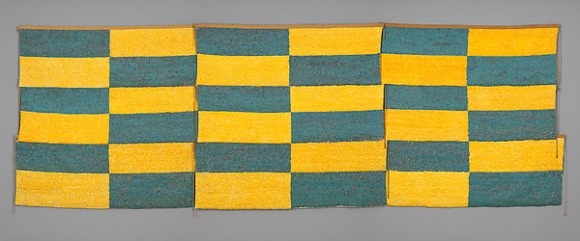This summer I’ll be heading to the south coast of Peru to work on a brand new excavation at the site of Corral Redondo. This is the first time I’ll be working on an excavation in Peru and I’m really excited for this new adventure, but also maybe a little nervous. Of course the exciting part is to get to travel to a new place, experience the culture and life there for several weeks, and to meet and work with new people. But also the bit of uncertainty about the work and the project and what the day to day will be like can add a little bit of stress to starting a new archaeological project.

- Map showing location of site in the south coast area of Peru (Map data ©2018 Google, INEGI Imagery, ©2018 TerraMetrics)
When I say this is a new project, it’s not just a new project for me but a new excavation all together! The site of Corral Redondo, located in the Churunga Valley, was first excavated in the 1940’s. The site was discovered accidentally by workmen in 1943 who were digging in the area when they unearthed a few ceramic artifacts (King 2013). They continued excavating the area and ended up discovering a sacred Andean site (huaca) which was used by both the Wari and the Inka (AD 600-1550) (IFR 2017). The materials uncovered were truly incredible and included imperial Wari face-neck jars, Wari feathered textiles, silver Inca objects and Inca ceramics, miniature figurines and textiles. The nature of the objects found suggests the site functioned as a ritual location where high end artifacts were buried during ceremonies (capachocha) (IFR 2017). Our work this summer will focus on surveying the area and re-excavating the site using today’s scientific and systematic archaeological excavation methods which include intensive documentation of the process as well as any artifacts uncovered.

Site of Corral Redondo, Peru. 2018 © IFR
The artifacts uncovered at the site were truly extraordinary, including the largest group of feather panels excavated (96 panels in total found rolled up in large ceramic jars) (King 2013). These panels, along with all the other objects found, were given to different museums after excavation. Some have stayed in Peru while others went to museums in North America. A group of feather panels from Corral Redondo are now in the collection of the Metropolitan Museum of Art and were bequeathed to the museum by Nelson Rockefeller who had acquired 23 of them (The History Blog 2013). One of the panels is currently on display in the exhibition “Golden Kingdoms: Luxury and Legacy in the Ancient Americas” which was at the Getty Museum in the fall (which is where I saw it) and now at the MET. So if you find yourself in New York you should go check it out, not only to see the beautiful blue and yellow nine feathered panels from Corral Redondo, but to see all the amazing artifacts in the exhibit. They are truly breathtaking! If you can’t make it to the exhibit, the MET has images of the objects in the exhibition online.

Nine-feather panels found at the site of Corral Redondo. The object is in the collection of the Metropolitan Museum of Art and currently on display in the exhibit “Gold Kingdoms”.
I’m sure you’re asking yourself “What are they going to find this summer?” “Will there be more feathered panels?” Well, we’re not sure. Since it’s the first season of the project and the site has been previously excavated, we don’t know. Our work there is larger in scope than just finding artifacts. The survey, along with the full excavation and documentation of the site, will help tell us more about what was going on there and when, and we may get lucky and find additional objects (which would be good for those of us working in the conservation lab). But there is the chance we may not find any artifacts at all. That’s just part of how archaeology works. You often don’t know exactly what you’ll find.
As the archaeologists set out to survey and start excavating the site, the conservation team will be working with the local community to create a small museum to exhibit material found. We will also be examining and conserving artifacts that have been collected in the area which are currently on display in the local school. Even if no new artifacts are found, the conservation team will still be very busy!

The current museum located in the community’s school where material from the Valley is currently exhibited. We’ll be working to improve the display cases and examine/conserve the objects. 2018 © IFR
So stay tuned for updates later in the summer on our first season at Corral Redondo on this blog, the Institute for Field Research’s (IFR’s) social media sites or the UCLA/Getty Conservation Program’s blog and Facebook page. If you want to learn more about Corral Redondo, you can check out the articles below that focus on the artifacts and archival research on the excavations, and also see the project information on IFR’s site.
¡Hasta la próxima!
King, H. 2013. The Wari feathered panels from Corral Redondo, Churunga Valley: a re-examination of context. Nawpa Pacha 33(1): 23-42.
https://doi.org/10.1179/0077629713Z.0000000002
King, H. 2016. Further Notes on Corral Redondo, Churunga Valley. Nawpa Pacha 36(2): 95-109. https://doi.org/10.1080/00776297.2016.1239802
